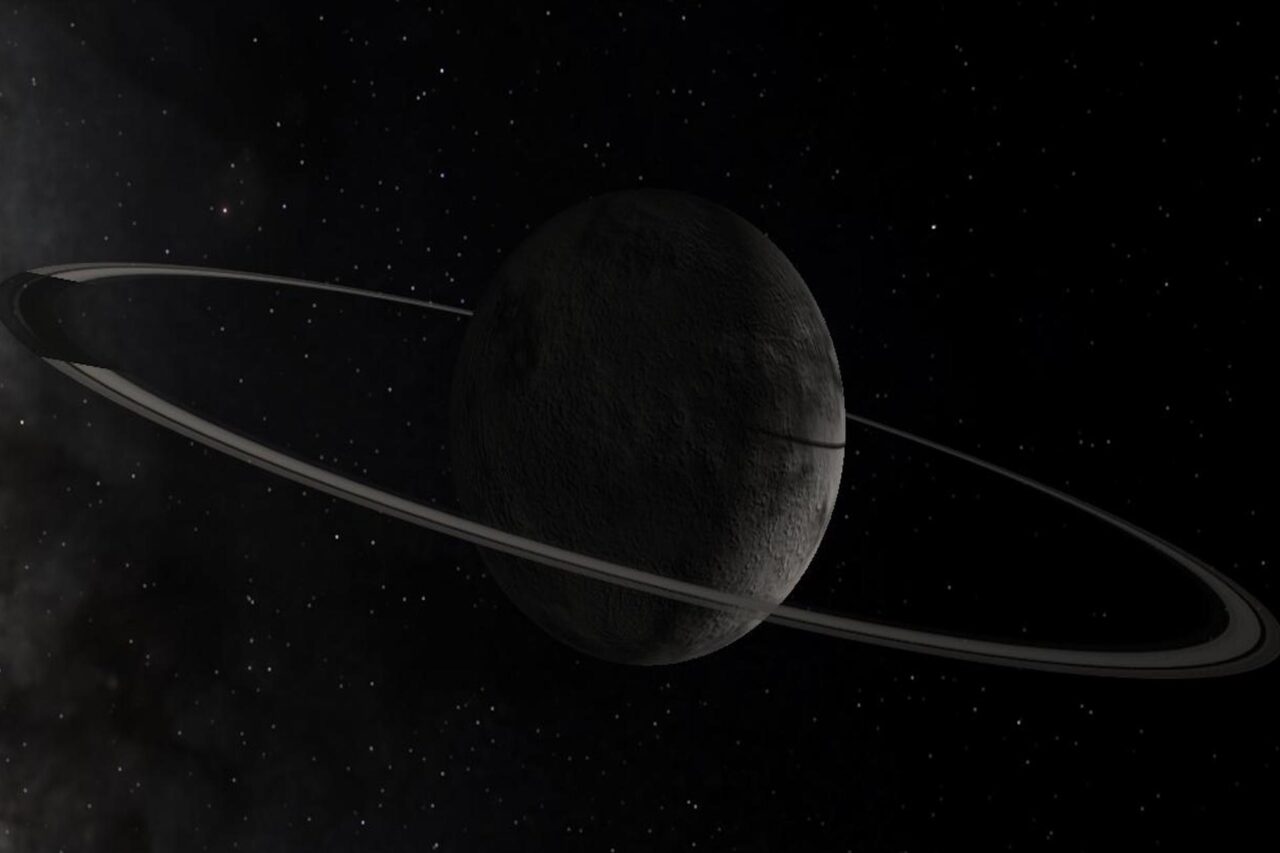UPDATE: Astronomers have just confirmed that a small icy world known as Chiron may be developing a ring system right before our eyes. This rare and exciting phenomenon is unfolding in real-time, offering scientists a unique opportunity to observe the birth of celestial structures.
A team of researchers from Brazil, utilizing the Pico dos Dias Observatory, made the groundbreaking observation in September 2023. They detected initial signs of three distinct rings forming around Chiron, a discovery published in The Astrophysical Journal Letters. This could mark the first time astronomers are able to witness the formation process of rings around a celestial body.
The significance of this finding cannot be overstated. Chiron, discovered in 1977, was the first object identified in the space between Saturn and Uranus that was neither a planet nor a moon, leading to the classification of a new category of celestial objects known as centaurs. For years, scientists have been intrigued by the mystery surrounding Chiron’s potential ring system.
In a recent observation, astronomers noted that as Chiron passed in front of a distant star, the light from that star dimmed multiple times instead of just once. This unusual pattern suggests the presence of a ring system, or potentially a cometary tail or cloud of debris surrounding Chiron. The team recorded the light dips and compared them with data from previous observations in 2011, 2018, and 2022, leading to the confirmation of the rings.
The newly identified rings are located at distances of approximately 170 miles (273 kilometers), 202 miles (325 kilometers), and 272 miles (438 kilometers) from Chiron. Notably, a fourth, more distant ring has also been observed at about 870 miles (1,400 kilometers) away, which is still under investigation.
The research team, led by postdoctoral researcher Chrystian Luciano Pereira from the National Observatory, is eager to gather more data on Chiron as it continues to cross the path of distant stars. They aim to determine the nature of the material surrounding this small world.
If confirmed, this potential ring system could provide invaluable insights into the processes that have shaped the majestic rings of Saturn and other gas giants over time. The evolving nature of Chiron’s rings suggests they may be changing dynamically, allowing scientists to study the formation of celestial structures as they happen.
As this story develops, astronomers are calling for further observations to solidify the understanding of Chiron’s ring system. The world is watching as this small icy body in the outer solar system offers a unique glimpse into celestial evolution.
Stay tuned for more updates on this fascinating discovery that could change our understanding of planetary ring formation in our solar system.
